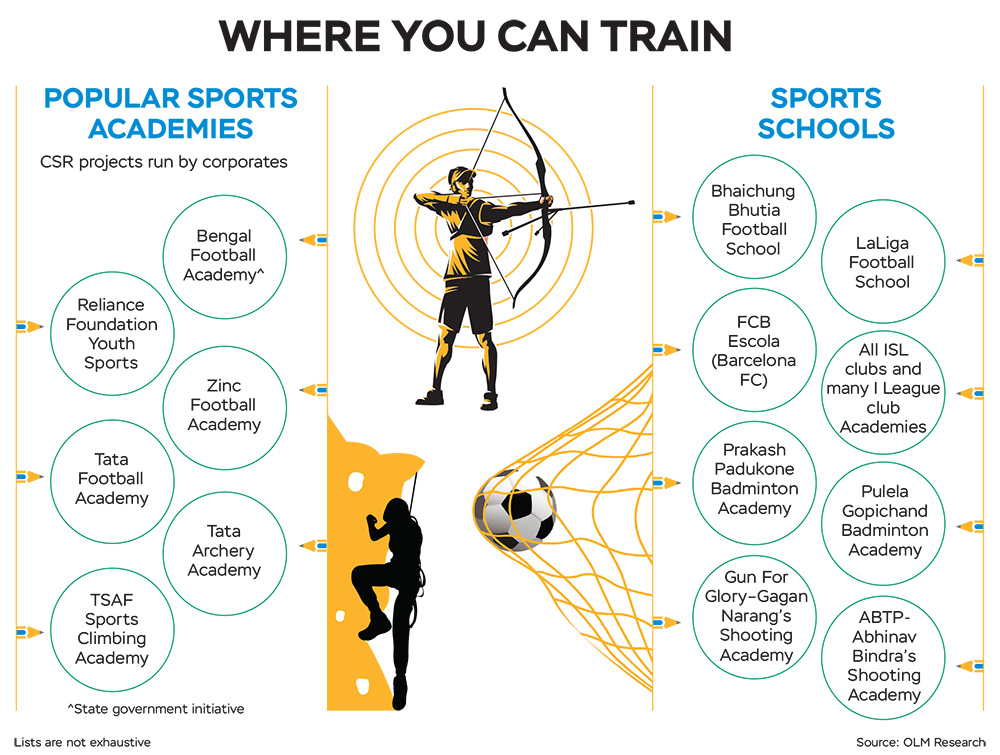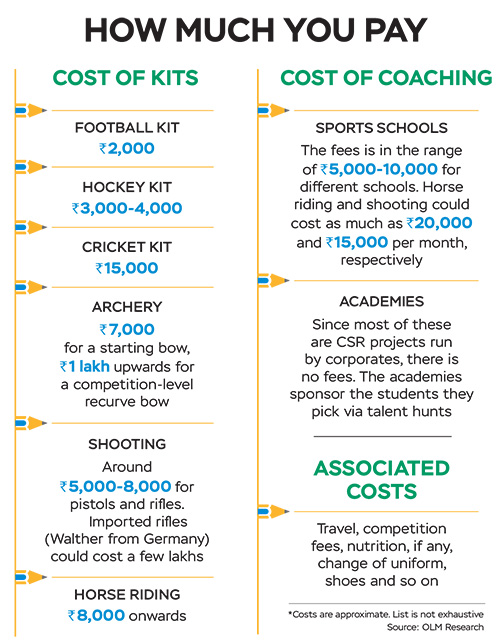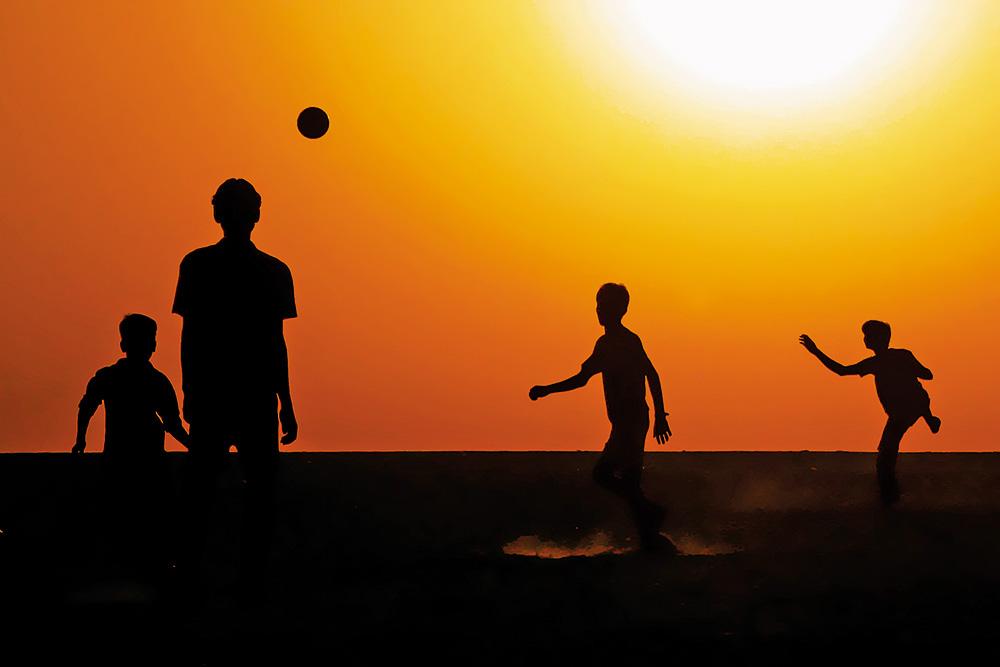September 8, 2023, Changlimithang Stadium, Thimphu, Bhutan. India is playing Maldives in the first semi-final of the U-16 South Asian Football Federation (SAFF) Cup. Into the 36th minute of the crucial game, Mohammed Kaif (15), nets a header past the Maldives goalkeeper to bring the score at 2-0 for India.
The Indian colts net a total of eight goals that day against Maldives for a showdown against Bangladesh, the other semi-finalist, for a repeat encore of their 2015 clash (where Bangladesh had got the better of India). This time, the Indian juniors held on to their game in the final on September 10, and routed Bangladesh 2-0 to lift their second title in the U-16 category.
Kaif played a crucial role in the tournament. He kept a clean sheet as a defender, netted a goal in the semi-final, and captained the U-16 Team India in his debut national game.
Though India won the SAFF men’s championship, too, this year, it was the victory in the junior category that has piqued the interest of sports administrators. That’s because this is the clutch of young upcoming talent that will give India its next football stars.
Professional sporting academies and clubs often scout for talent from a very early age for training and grooming. It was through one of such talent hunts that Kaif made his journey from an obscure football field in Rajasthan to the stadium at Thimphu. He was among the 40-odd footballing prodigies selected by Hindustan Zinc’s footballing initiative, Zinc Football, from across India for a full scholarship at the Zinc Football Academy as part of a student-athlete programme in 2018 as a 10-year-old. A student at DAV HZL School at Zawar Mines in Udaipur (the school is located within the football academy), he will appear for his Class X board exams in 2024.
Says Arnab Mitra, a sports management consultant, who is into digitising talent identification using tech and digital streaming: “The usual process starts at the school level. The sports teacher will scout potential talent for the school team, then the student will start playing inter-school, district, state, and lastly national. If the child catches the eye of some talent scout during one of those important tournaments, then he will be taken up for grooming. This is the usual process even now, though things are a bit more organised.”
It is indeed at the school level that students choose their careers and parents start planning and estimating the investments for it. While costs are an intrinsic and important aspect to keep in mind, finding out and knowing the process to follow and the challenges that may come along is equally important. We have tried to give you an idea about all that.
Stumbling Block
Unfortunately, despite a population of 1.4 billion and counting, India’s performance at international sports has hardly been impressive. It is only at the 19th Asian Games at Hongzhou in China this year that India had a medal tally in three digits (107). The government in the recent past has come out with various programmes such as Khelo India in a bid to revive the culture of sports at the grassroots level, but it does not seem to have picked up just yet.
The reason for that seems to be buried deep into the Indian mindset. Traditionally, sports and other co-curricular activities were always thought of as an extracurricular that helps in the overall development of a child. Also, any sport is highly competitive, and one must be among the best to represent the country or to play at the top in individual games, which means the scope of success is less. Therefore, parents, typically, do not encourage children to pursue sports as a career.
Besides, pursuing professional sports needs substantial investment, without the guarantee of success. Most Indian families (read middle-class) do not have the means to bear that kind of cost in the long run. Players, typically, depend on corporate or government grants for training and diet. But to be able to receive that grant, one must be among the top league in one’s game, which again is not guaranteed.
Obstacles On The Way
The absence of counsellors who can guide students to take up a career in sports is also glaring. While there are a plethora of career counsellors who can guide students right from Class VIII up to their Class XII and help them choose a career, such as engineering, medicine, law, business studies, humanities, and so on, and even guide them even in the admission process to the universities abroad, nothing of that sort exists in the domain of sports. This makes it difficult to spot the right opportunities.
There are individual sports schools as well as government and corporate sponsorships (see Where You Can Train). The latter do not charge anything from the students.

Usually, the academies provide sponsorships based on talent hunts. It’s important to track them so that your child can participate in these. Says Mitra: “The government’s sports body for school games, the Schools Games Federation of India (SGFI), is responsible for running the schools competition structure. But the execution at the grassroots level hasn’t been quite effective. Hence, the Sports Authority of India (SAI) is focussed on aggregating such activities under the Khelo India initiative. Some states have also started implementing talent identification programmes. But there is still no scientifically-designed talent identification process and structure working at the national level.”
Kaif’s father Mohammad Sayeed, 37, who had represented Rajasthan in the prestigious Santosh Trophy in his youth, was clued in because he was experienced. So, when he got to know about the trials being organised by Zinc Football Academy, he encouraged his son to take part.
Remember that it can be a long road and involves a lot of risk due to steep competition.
Since Sayeed was a professional himself, he was confident his son had talent. In the trials, Kaif thoroughly impressed the coaches. That was just the start of the gruelling selection process, involving a total of 43 talent evaluation camps and district, state and national-level football tournaments held across Rajasthan. Finally, the best 40 were shortlisted from a total of 4,500 under-14 students and awarded full scholarships at the Zinc Football Academy.
In July 2023, Kaif was called up for the India national camp in Srinagar for trials. After training for around a month, he was selected in the 23-member squad for the India U-16 team.
The Grind
It’s an extremely disciplined life for the students at academies. For instance, at Zinc Football Academy, their day starts with a 1-hour morning practice session from 5:45-6:45am. Then, there are regular classes from 7:30am to 2:30pm, followed by a two-hour evening practice session from 4:30 to 6:30pm. They also have evening matches twice a week on Wednesdays and Saturdays. The training also includes gym sessions, running, physiotherapy, meditation, mindfulness and other activities designed to improve focus.
Says Annanya Agarwal, president, Vedanta Sports: “The budding footballers in our academy have been a true standout this past year. Their talent on the pitch is equally matched by their dedication to academics. While our boys, Sahil Poonia and Mohammed Kaif have made us and the whole country proud, Aman Khan came out as the school topper in the board exams with a score of 90.8 per cent.”
But what about those who pick up sports late or are into disciplines, such as archery, shooting or equestrian sports where the sportsperson’s playing career is comparatively longer?
Aryan Singh, 18, from Jamshedpur, who took to archery along with his two friends in school for a summer vacation sports camp at the young age of 8, is yet to join any academy. He is still honing his skills at the JRD Tata Sports Stadium grounds while continuing with his studies at school. Next year, he will be appearing for his Class XII board exams. Aryan has won a few laurels in the zonal and state levels and has participated in the nationals in the junior category.
“I was in class IV when we were asked to pick up a sport for our summer vacation. I took up archery with two of my friends. Initially, the training was boring and the sport felt monotonous. One of my friends even quit within a few days. But I developed a liking for it,” says Aryan.
He is not under any dietary plan as of now, but his training includes specific exercises, yoga and meditation for improving his focus. He, typically, trains for 4-5 hours every day.
The Cost Impediment
The kind of training that young athletes get at dedicated sports academies costs a huge sum of money that is beyond the means of most Indian families. Zinc Football Academy on average spends about Rs 14 lakh per annum on each student for their training and education. While this and other academies sponsor students, if you opt for sports school on your own, the costs will have to be borne by you (see How Much You Pay).

However, if a child is starting out individually, the costs may not be that high, depending on the sport. “The first wooden bow I got cost me around Rs 7,000-Rs 8,000. The full-length recurve bow, which I got a few years ago cost me Rs 1.3 lakh. It’s imported and can be used in competitions as well,” says Aryan.
For his training at the stadium in Jamshedpur, Aryan pays around Rs 4,000 per annum. Together with shoes, clothes, personal kit, etc.the total comes to another Rs 35,000 per annum. He aims to receive a scholarship through the Khelo India programme next year and is working to improve his performance.
The costs vary a lot depending on the type of sports and the equipment required. Football may be among the cheapest, as the equipment only includes clothing, boots and personal protective gear such as shin guards and gloves for goalkeepers. Hockey would be a bit more expensive, because of the sticks and helmets. Cricket would be even more expensive because a kit will include, bats, gloves, helmets, and sets of guards for the elbow, thigh, ribs, chest, and so on, along with the different sets of spikes for batting, bowling and, of course, the uniform.
Typically, the cost for a football kit is in the range of Rs 2,000. For hockey, it is around Rs 3,000-Rs 4,000, while for cricket, it’s in the range of Rs 15,000.
Some sports like horse riding do not have much by way of equipment cost but they are expensive overall. The club membership could be as high as Rs 4,000 for a week (for instance, Agadio Riding Stables, Guragon). Then there would be the cost of the usual gear, including helmets, boots, gloves, breeches, body protectors and so on. Riding boots could cost anything between Rs 3,000 and Rs 10,000, gloves around Rs 500, body protectors approximately Rs 3,000 and the helmets around Rs 1,000-3,000.
Shooting is a much more expensive game. Rifles and pistols will typically start at a few thousand and the completion-level imported ones, which are typically German-made, come for a few lakhs. The training and shooting range cost is, of course, separate.
With opportunities opening up in the world of sports management, movies, event management, there are various options available now. But for the first choice of the pavilion or the stage, the primary criteria will always be talent and the willingness of the parents to let their children pursue their dreams
s.sanyal@outlookindia.com







